I presented the following to my colleagues and thought I would share with you as it serves as a good summary…something difficult in a facebook post is I cannot sift in photos to the sites mentioned easily.
I received the Florence G and Arthur A Fisher Travel Scholarship, and my proposal is to study historic healing places in Italy, Portugal, and Spain. The trip is to be divided into 2 portions, the first trip to Italy and the second will be next year to Portugal and Spain. I’ve always drawn to buildings that last, places of permanence, I am amazed at the idea that a built structure can withstand challenges and have cultural significance hundreds or thousands of years from the time it was used and built. I have been interested in historic preservation since college and thought I may become a historic preservationist, but I am thankful that I am able to work as a healthcare architect and contribute to important healing places today along with other talented healthcare architects. Many of the places I studied have been able to make it through some serious tests of time posed by war, political change, pandemics, natural disasters and now, climate change. My studies ask the question what is the secret to why some of the healing places last? During my visits, I concentrated in addition to understanding the history of the site, how healing waters, durable materials, connection to nature, and restoration and adaptive reuse contributed to these sites surviving all this time. The order in which I’ll present these sites is first by ancient sites, then touch on the importance of healing waters as a foundation of healthcare, then go into historic hospital sites visited.
Ancient Sites:
I visited the Valley of the Temples in Agrigento, Sicily to see the UNESCO world heritage site has 8 Greek temples originating in 400-390 BC. The Temple devoted to the God Asclepius or God of Healing accommodated pilgrims and the sick. The site had a monumental entry, a sacrificial altar, and a kind of well where offerings were deposited. Part of the ritual of healing was to offer coin to Asclepius by placing it in a vestige with a lid ornamented with a bronze open-mouthed snake, a symbol of rebirth. It also had a fountain and a waiting area after purification rituals were performed. Healing took place at the hands of priests and priestesses who were people who lived at the Sanctuary capable of performing the surgeries and difficult treatments who then attributed the recoveries to the Gods. Tools like scalpels needed for surgeries were found during excavations. When night would come, the patients would sleep in the temple hoping for recovery after treatment, and to dream that they were healed.
A second ancient site:
In Rome, I visited the Baths of Caracalla which was massive therapeutic center of wellness and place of healing to improve the lives of citizens of all social classes by providing them a place to walk, workout and go to the Gym then to the Baths. The ancient public baths were built by 216 AD. This is a sprawling 27-acre (1,000,000 SF) complex consisting of towering arches, expansive brick-faced concrete walls that rise high in the air. It is massive! 130’ tall.
The brick and concrete structure that we see today was covered by marble, mosaics, and ornamented stucco work, topped with gigantic vaults with coffered ceilings to reduce its weight. Here’s an image of what it looked like. Roman bathing complexes were possible thanks to the system of aqueducts that were constructed to supply water to Rome. It was an engineering marvel with heating and drainage systems that were very sophisticated for the time. After a workout, the citizens of Rome would enjoy baths in water of varying temperatures, and also enjoy steam and massage areas and sunrooms. The site was abandoned after 300 years of use, due to Siege of Rome when the aqueduct was cut off. In 847, an earthquake toppled much more of the structure.
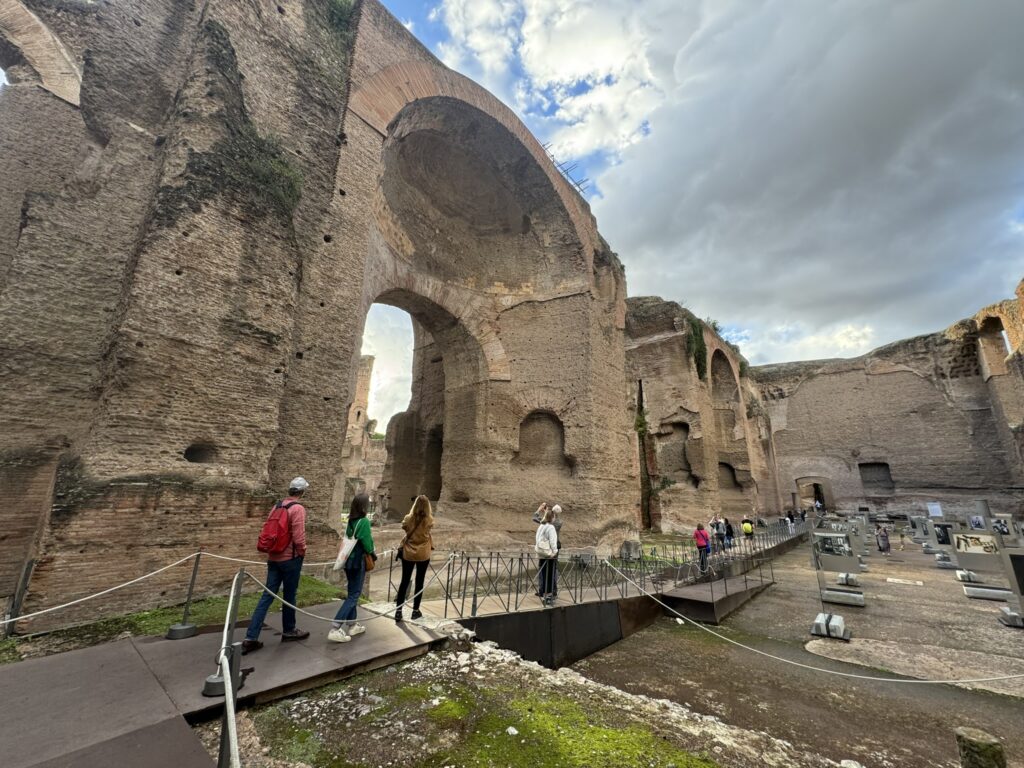
Healing waters
• Water is central to health, for drinking and for cleansing and can sometimes be curative
• Most important sites have a connection to rivers, or springs
• Hot springs as source of thermal waters to
• Heal skin diseases.
• Help with joint pain and arthritis
• Baths as a social experience
Healing waters: Tuscany
Bagno Vignoni (second image below) and Bagni San Fillipo (first image below) are villages that are part of the Val d’Orcia in Tuscany, the baths are hot spring fed pools which make this a much-visited site for centuries since the Roman times. These medieval baths, originating in the 16th century, are along the pilgrimage route and very near to the Orcia River, where pilgrims could rest. Bagno Vignoni has survived Middle Age wars and fires, and its restoration is a testament to its value to the community. Houses and inns were built around the pool, and spa-goers can experience benefits of the waters at associated spa centers. Water to this pool comes from a tank that stores hot water sourced from an aquifer of volcanic origins. I also went to a natural hot spring in Bangi San Fillipo known as the “white whale” because of its uniquely shaped limestone landscape made from deposits from mineral rich waters into the baths.
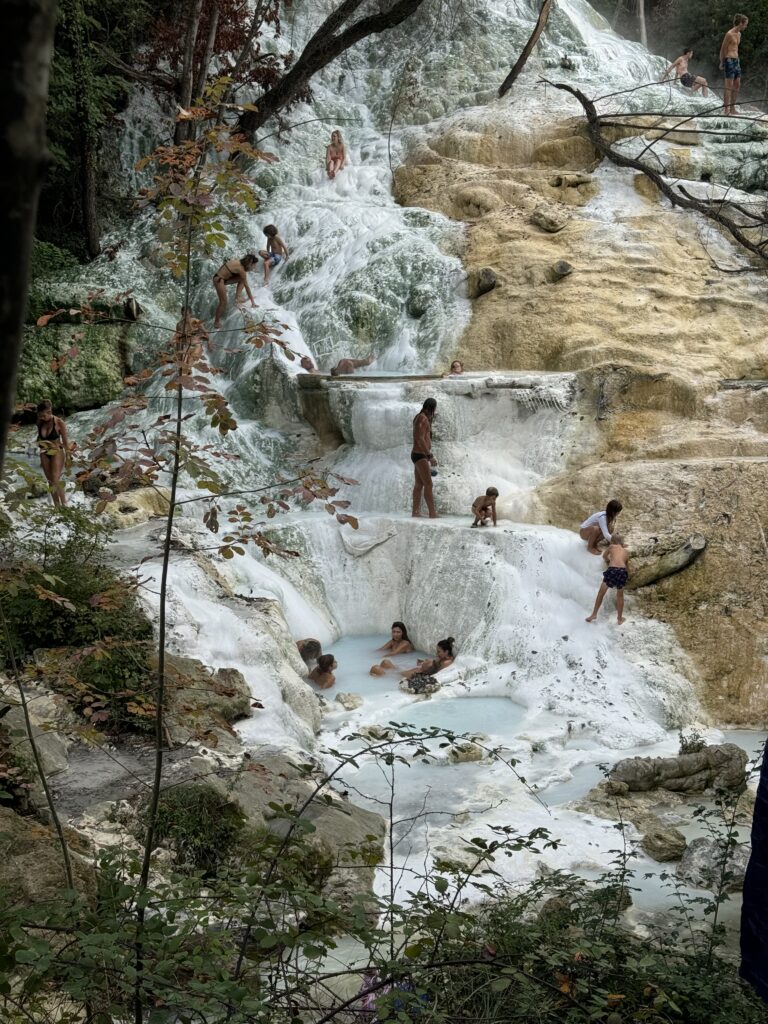

Historic hospitals:
For much of history, physicians and healers made house calls. The first well documented hospitals were Roman military hospitals. Rooms were built around a courtyard and each room usually had multiple beds within it. This resembles the development later recognized as wards. As the Roman empire turned to Christianity after 400 AD, monasteries included housing for travelers, the poor and the sick. Later hospitals became attached to every cathedral in the 6th century. Religious institutions provided most healthcare to the poor in large, open wards while physicians continued making house calls. Wards housing multiple patients expanded and became public hospitals Oftentimes in the 1400s there was an altar visible to patients recovering and wards radiating from it, which now resembles where today we have nurse’s stations. The larger the hospitals became, the more dangerous they became and would need to be divided up into pavilions by the late 1860s. The pavilion plan provides fresh air and daylight, improving recoveries and reducing infection and is sometimes called the Nightingale Ward thanks to Florence Nightingale’s teachings about nursing, sanitary conditions, and infection control.
Venice’s Historic Hospitals (1 of 2)
• The Hospital for Incurables is a large 16th century (1522) in the Dorosduro district, an island of Venice. I took a 2-euro Traghetto to get to the Island, which was an experience in / of itself.
• Then, I ventured over a canal and through an alley which didn’t look like I place I should be walking but it was – suffice it to say Venice is a place where it’s easy to get lost.
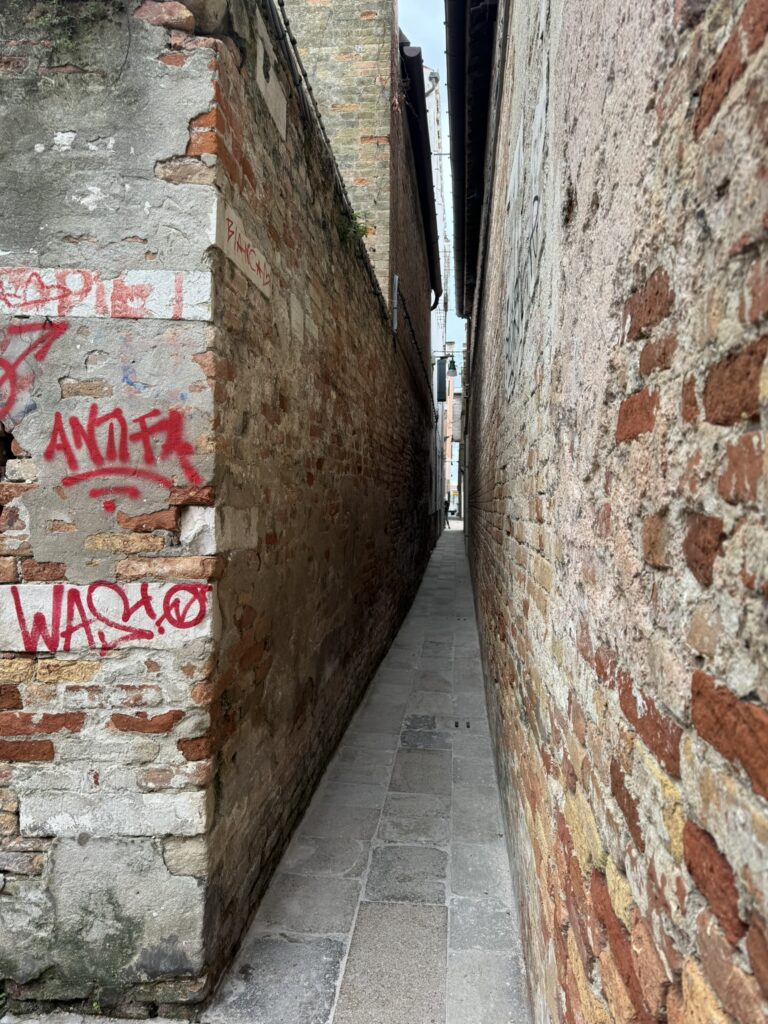
• We all were trying not to get our shoes wet from the water flooding onto the sidewalk from the Canale. Climate change has caused a rise in sea levels, so any City like Venice built at sea level is particularly vulnerable.
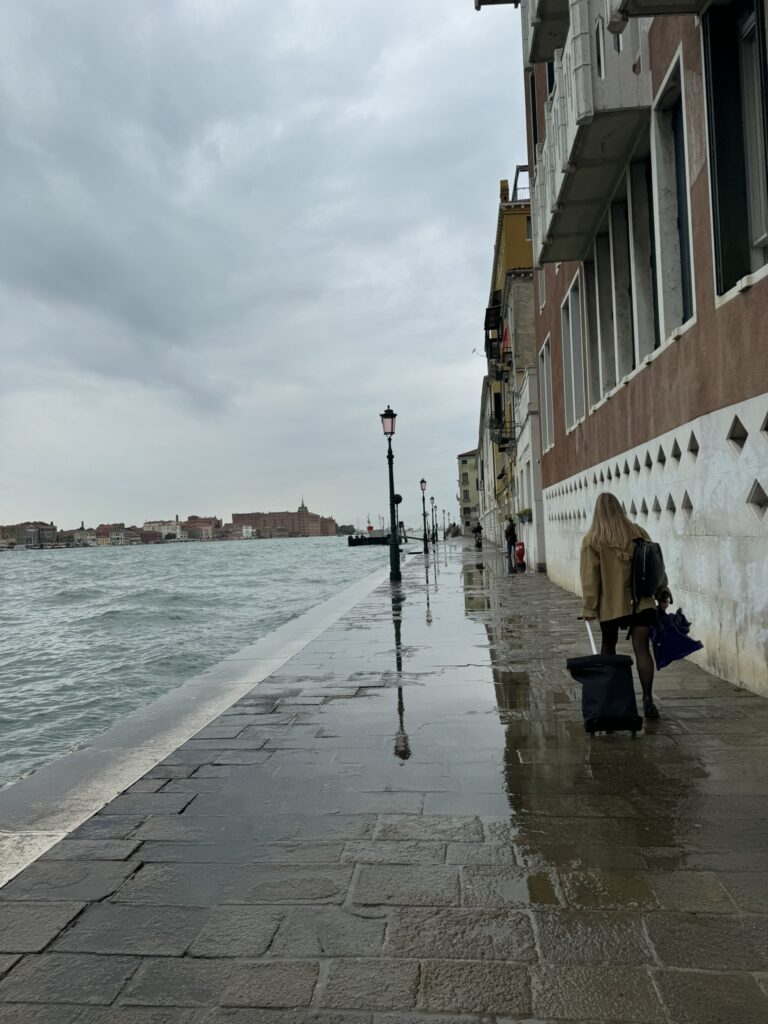
• This building has evidence of decay of base of buildings and at the wood door at the entry.
• At first the hospital was intended to serve patients who had been diagnosed with incurable illnesses like syphilis but later it became an orphanage.
• Today, the building is occupied by the Academy of Fine Arts. The building has been adapted to have a wheelchair lift and is having structural repairs.
• Dynamism of old and new together is what makes this place special, young people making the future of the historic place possible. I love the image of the digital art next to the historic arches in the Courtyard.
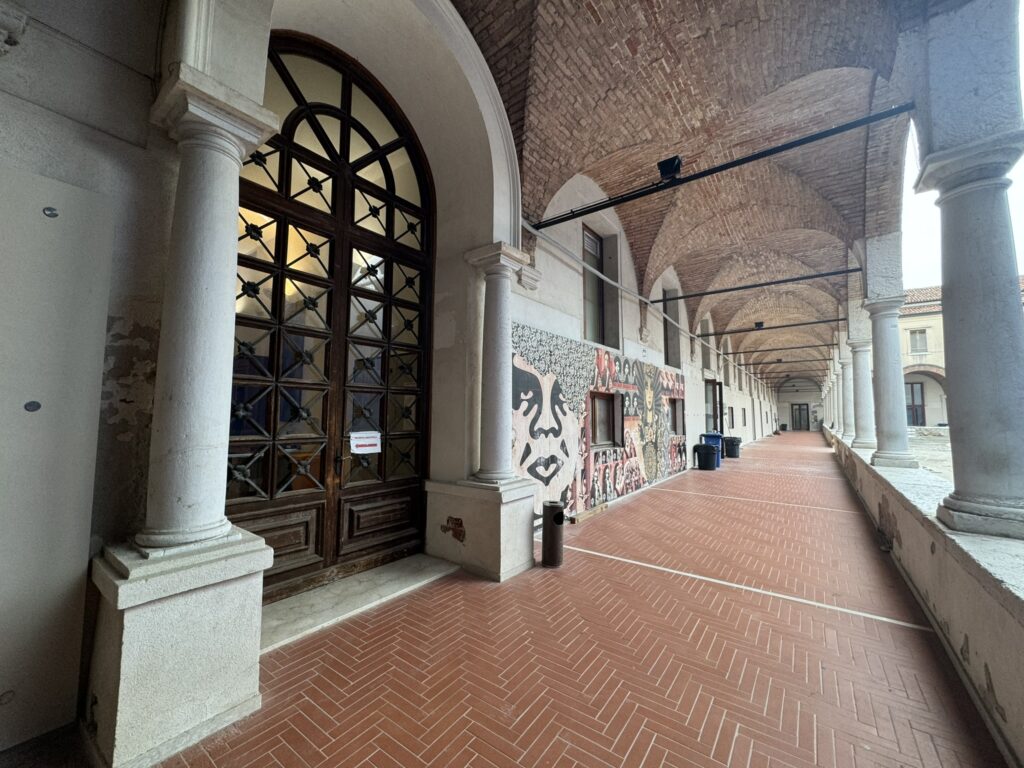
Venice’s Historic Hospitals, 2 of 2
• This hospital is the only one I visited that is currently being used as a hospital
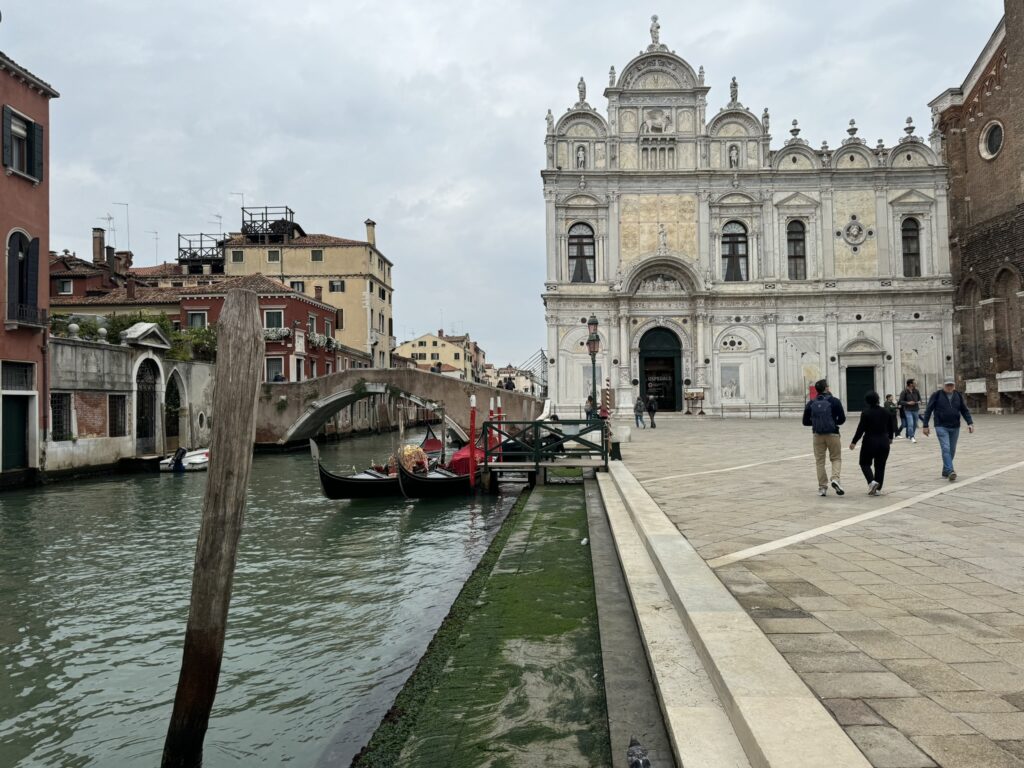
• The building was founded in 1427 but after fire, it was restored in 1485 by architects Lombardo and Burora. After the plague, ministers of health were given lots of power/influence as emphasis on HC grew and they had more funds to improve the hospital, in Renaissance style.
• There are statues atop the arches of the marble facade, with two lions guarding the entrance. The facility’s door and windows are embellished with ornate detail in a way a cathedral or basilica would be decorated. The building first became a hospital after the Republic fell in 1797.
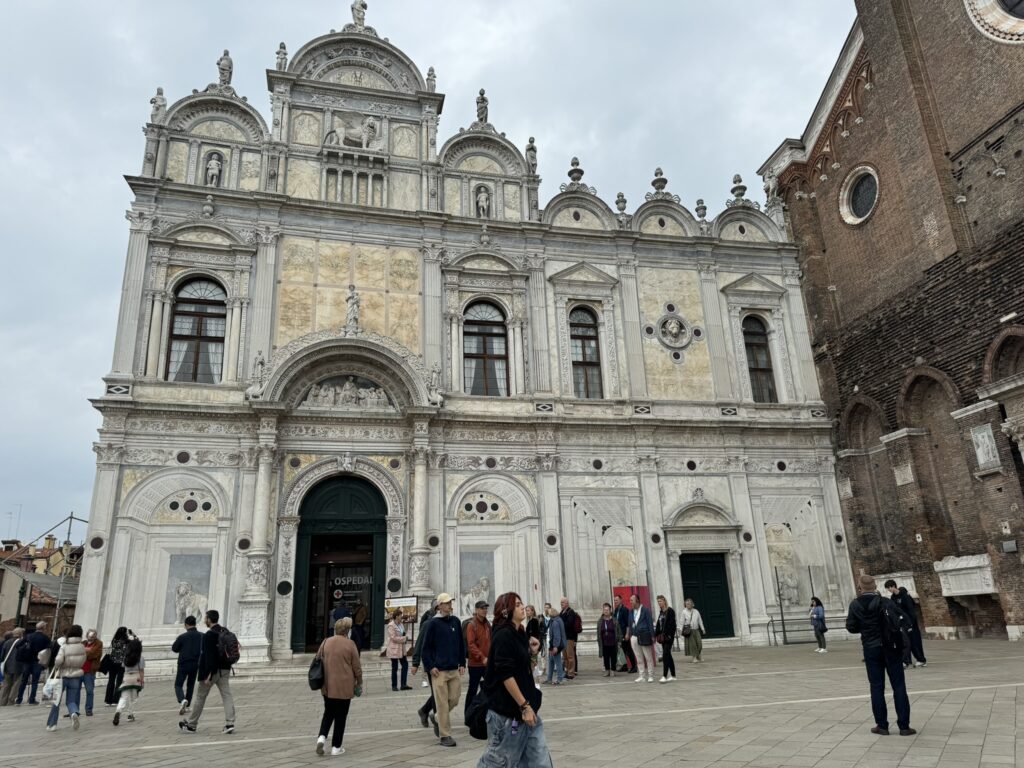
• Near the main entry, and up the staircase is a Library and showcases historic biblical and medical texts, and medical tools. The wood coffered ceiling is inlaid with gold paint.
• A courtyard connects the hospital’s public functions with the rest of the wings, where inhabitants can walk around or sit in a garden with a fountain.
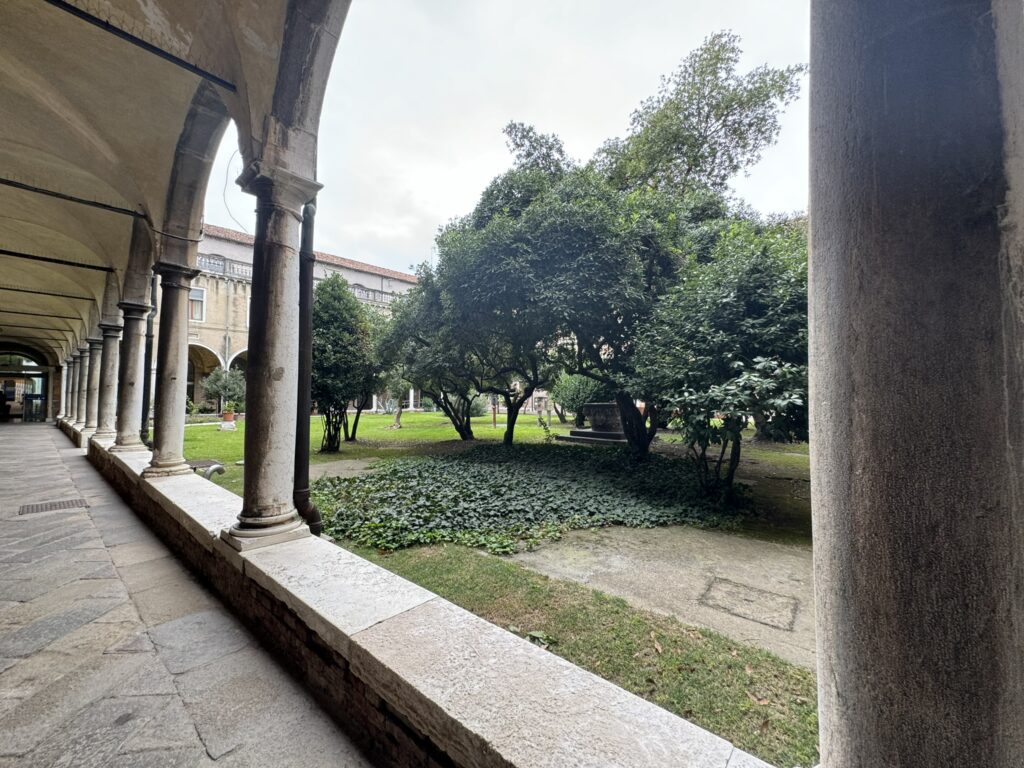
Historic Hospital in Milan:
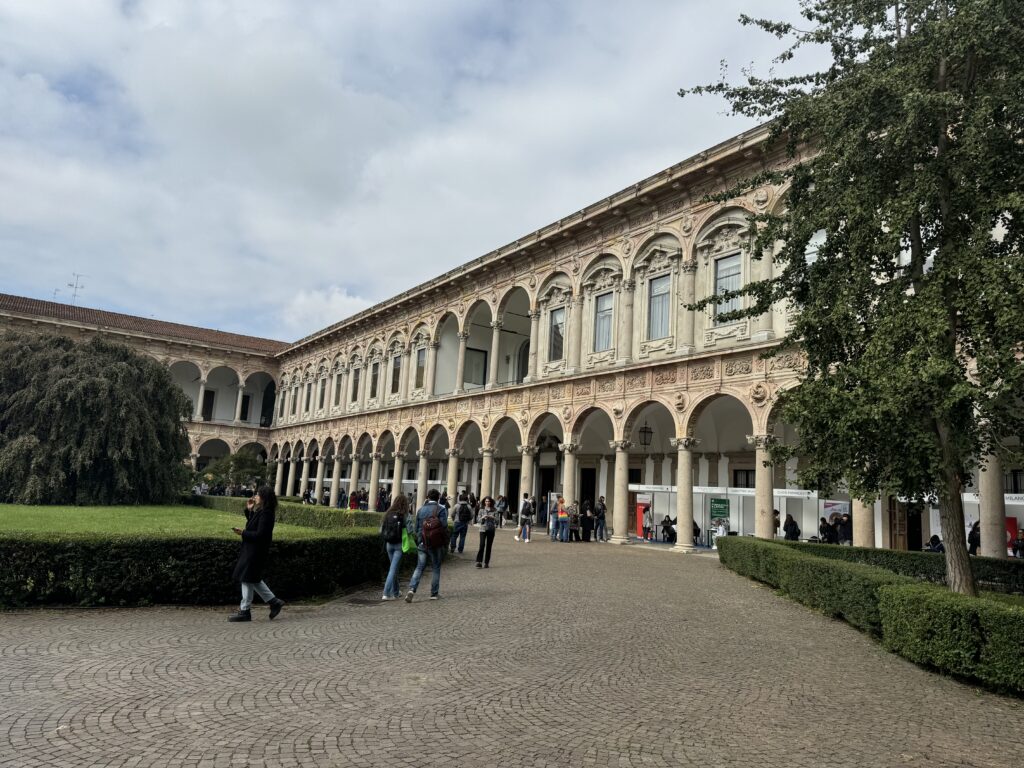
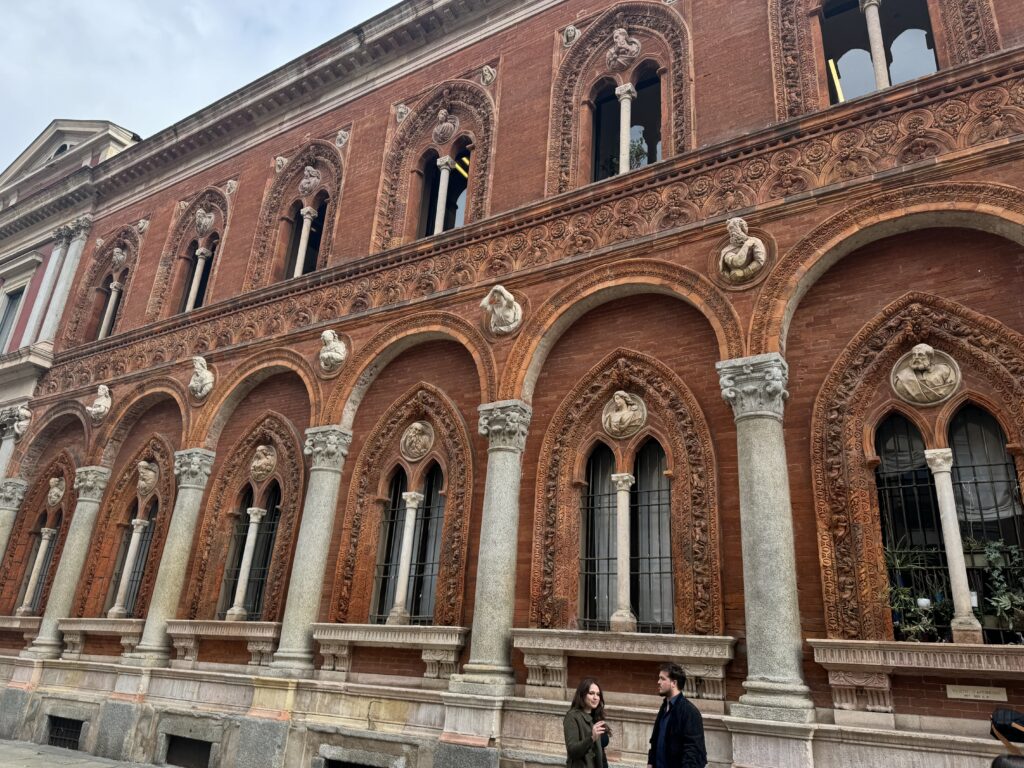
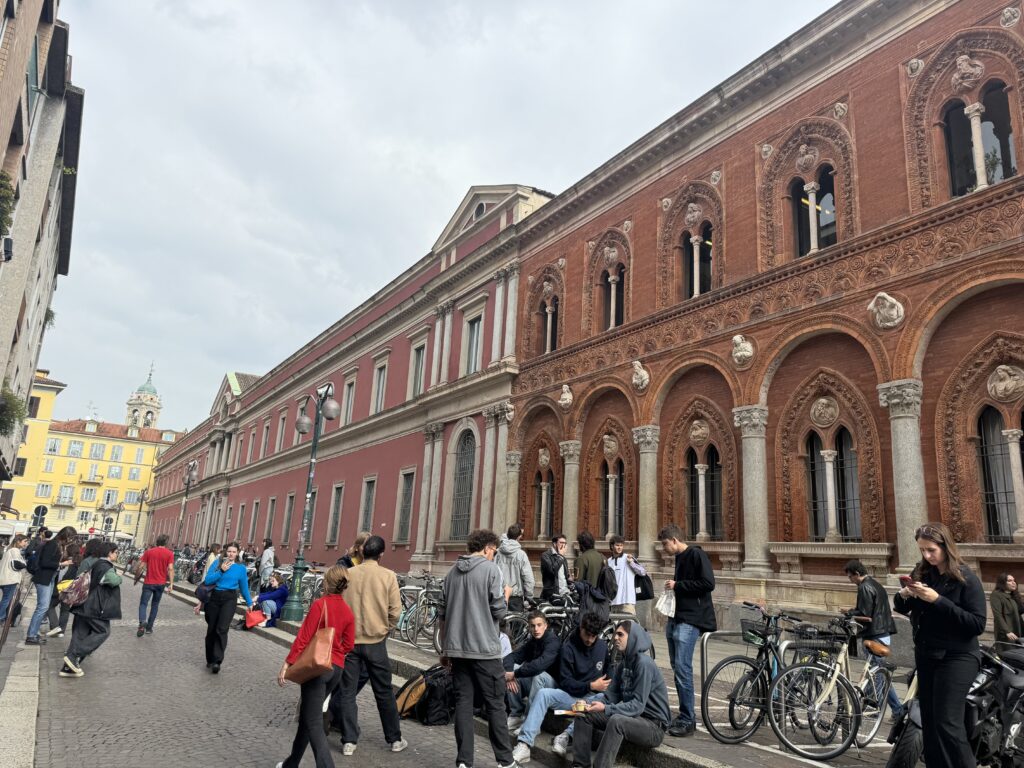
• At this Hospital Maggiore of Milan, I was lost when I arrived, and had trouble finding the entrance. As it turns out, there is a grand entry on the opposite side of the building on the side that faces the pedestrian and commercial area.
• Construction began in the 1469 and was designed by the same Tuscan architect, Antonio di Pietro Averlino, also known as Filarete. He was a Florentine architect who designed Milan’s famous Sforza Castle and the cathedral.
• The building was founded as a Hospital for the Poor to bring Milan’s 30 hospitals into 1 location.
• This served to aid in Filarete’s idea to create an ideal Renaissance city.
• The building consists of a series of inner courtyards (cortile) , an important connecting element and way to provide natural, daylit spaces that helped aid in a healing environment.
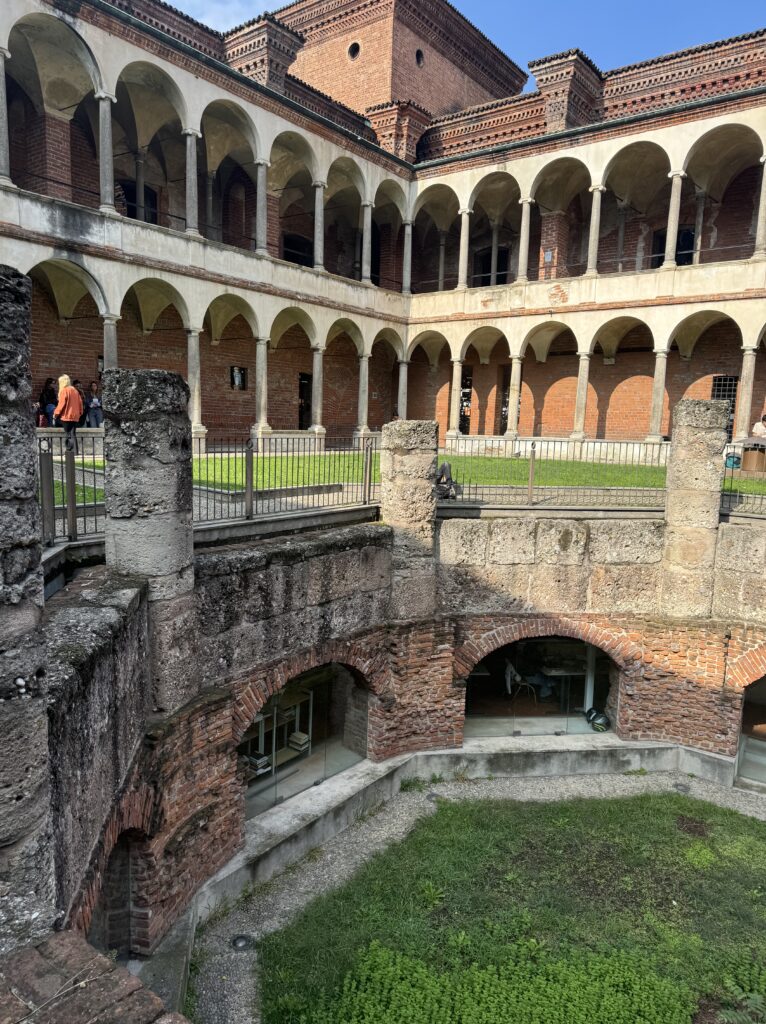
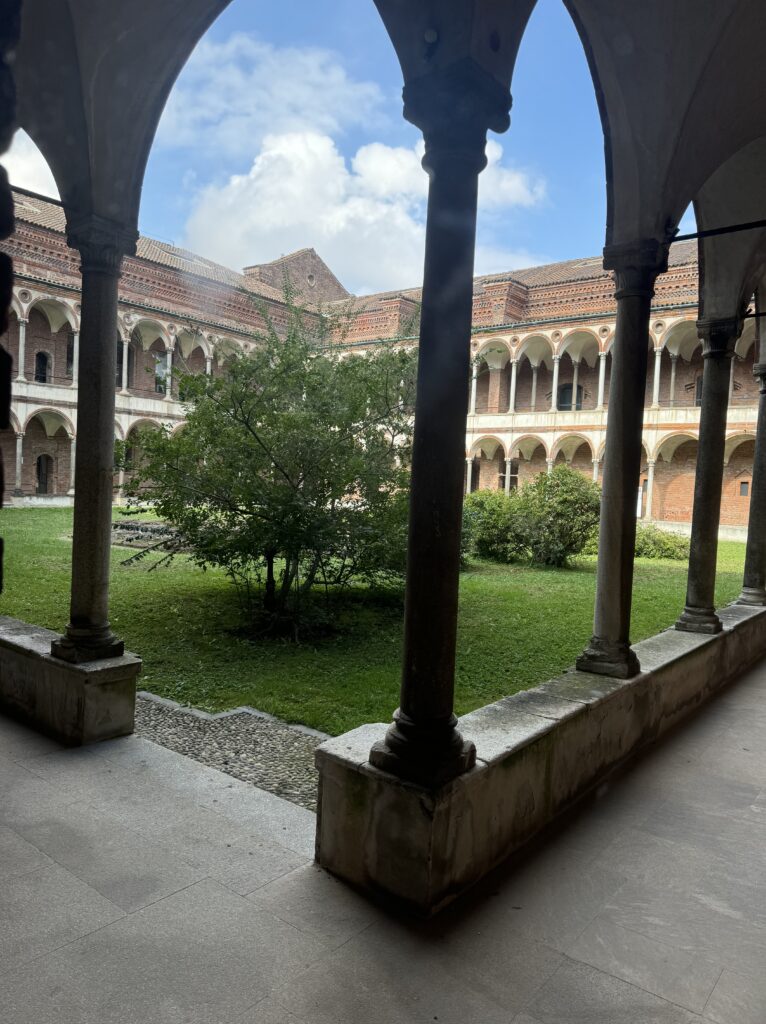
• Once again, this site is dynamic in the way that the young people of the University enliven an old historic building as part of its reuse/revival.
Historic Hospital in Siena
• Santa Maria della Scala (St. Mary of the Ladder) sits atop Cathedral Hill in Siena and is a monumental complex. Once a medieval hospital, it is connected to the Francigena pilgrimage Route.
• This site functioned as a hospital even up to 50 years ago, which is truly remarkable.
• The hospital was founded in 848 as a place for caring for the abandoned children, the poor, sick, pilgrims. It is one of Europe’s first and oldest hospitals.
• This hospital has become the community’s historic center of culture and art in Siena.
• During the 14th century, the hospital commissioned many interior and exterior frescoes and altar pieces after the Black Death, some of which were completed by painters Bulgarini, Bartolo and Quercia (in the Pilgrim’s Hall)
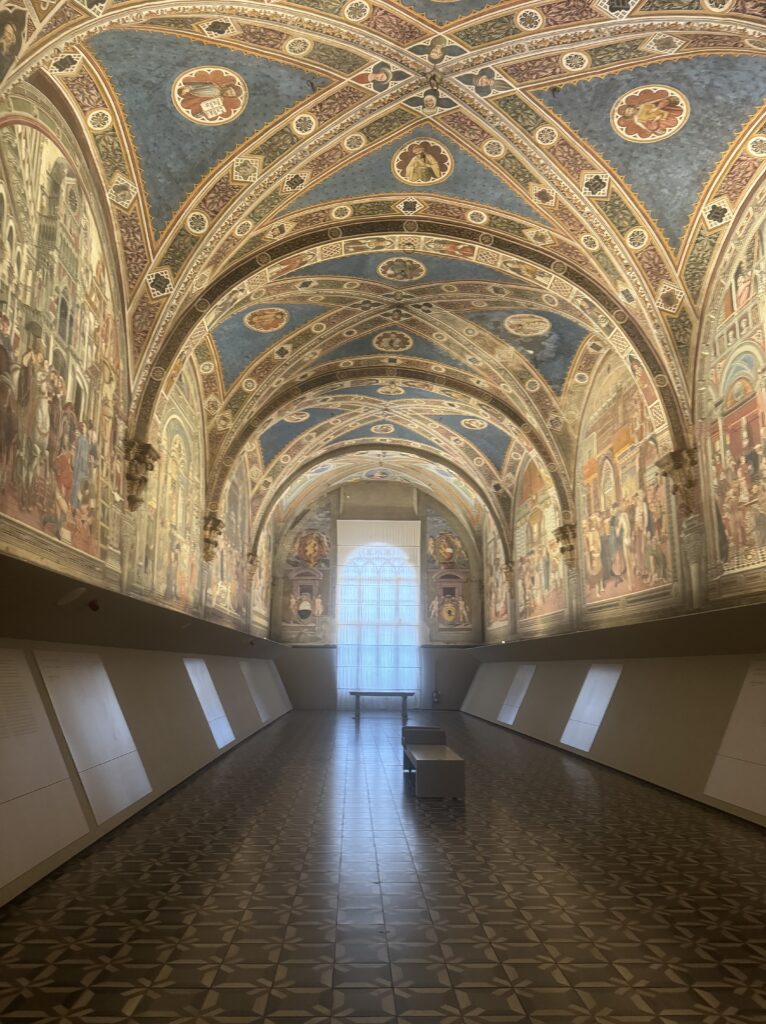
• The Old Sacristy contains precious relics like the nail from Christ’s cross and altarpieces, with walls and ceilings painted by Lorenzo Veccietta,
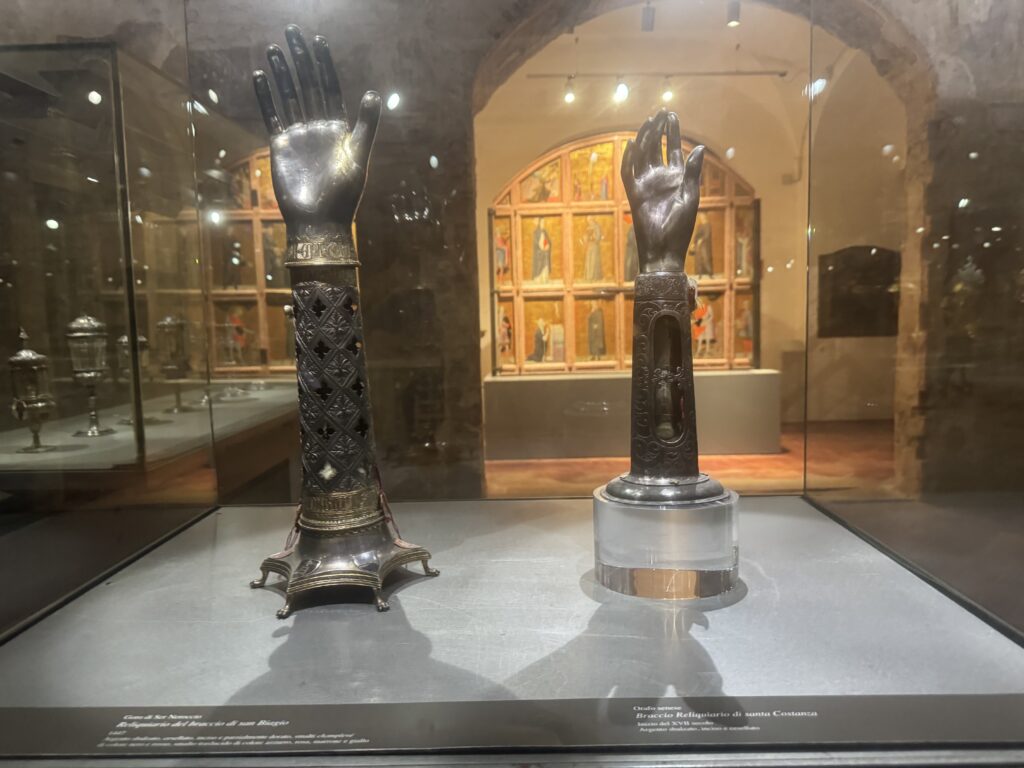
Historic Hospital in Salento, Santa Maria de Leuca
• To provide me context and background on displaced persons camps after WWII, I visited the Museum of Memory and Reception Camps which is in Santa Maria al Bagno and open since 2009.
• The facility serves to document the stories of Halocaust survivors who found refuge in Apulia between 1944 and 1947.
• The museum houses a collection of murals, memories and artifacts.
Hospital of Rebirth:
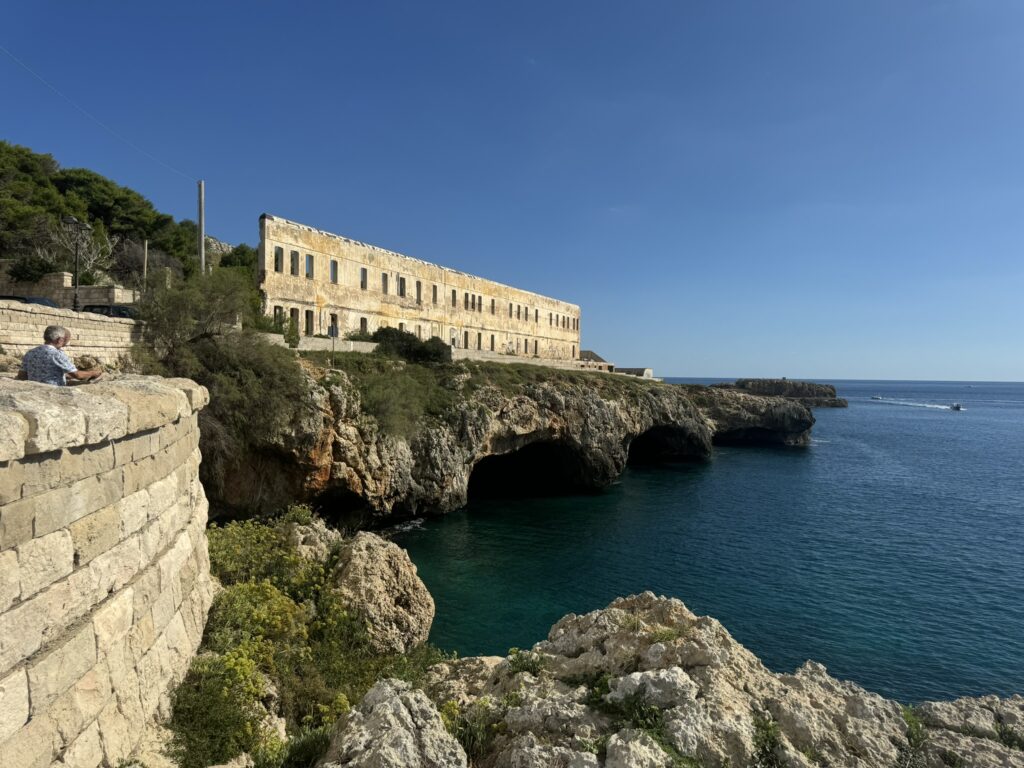
• After WWII, many Jews who survived the Holocaust could not return to their former homes and options for them were limited .
• The survivors sought to rebuild their shattered lives in displaced persons camps
• Nearly all the displaced people were malnourished, a great number were ill and some were dying. Shelter was often improvised, and there’s record of many military personnel sharing their own supplies with refugees. Primarily they were cared for in military barracks but were in some cases and the case of Santa Maria al Bagno and Santa Maria de Leuca all the displaced persons lived in requisitioned villas that were summer homes of wealthy Italians. These two sites had a theater and a school, and the people residing there were offered vocational training. Santa Maria de Leuca was established from 1944-1947 and this camp was well-known for being the site of a efficient hospital at Colonia Scarciglia. The capacity of Santa Maria di Leuca Displaced Person’s camp is estimated at 1, 800 people. It especially served as a maternity ward and was coined as the Hospital of Rebirth as many children born in that period
• The site is very near the water, overlooking the sea and with a short walk away from the Hospital people could be quickly at the water’s edge. Sadly today, the building is in a state of total abandonment with only the original façade remaining. Whether to restore the building or demolish it has been some source of debate in Santa Maria De Leuca, apparently the City has a long-awaited a Sea Museum.
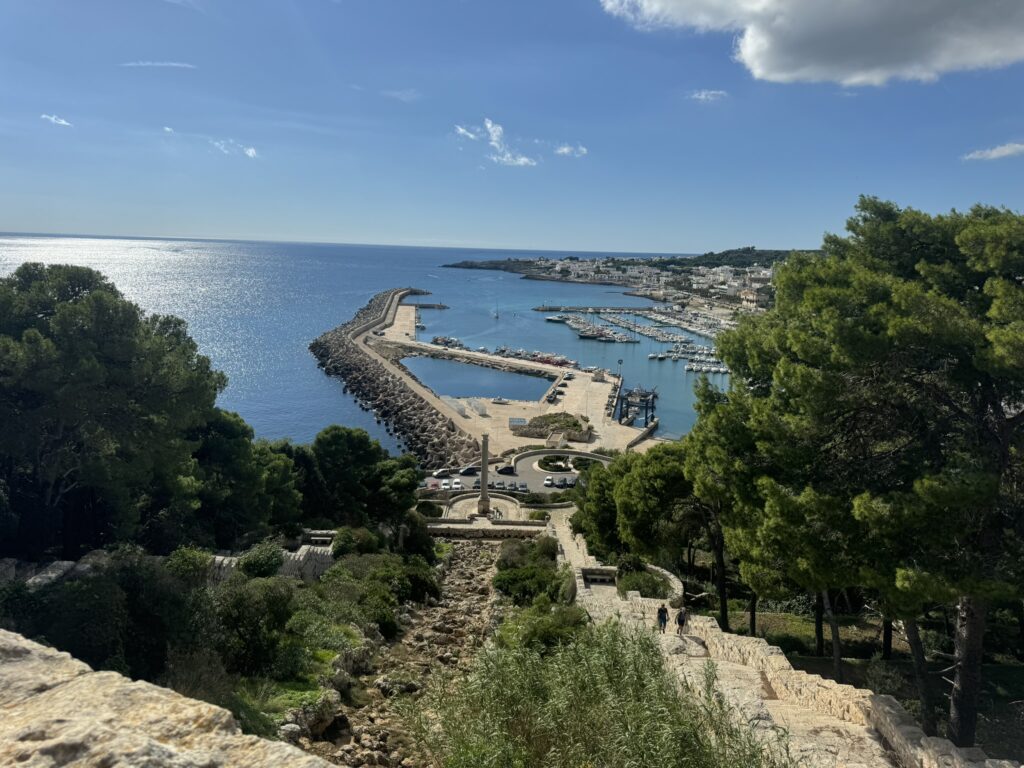
I am now halfway through my research and travels; which I am collecting information on what makes these historic healing places last. These are the items that I am studying/gathering information on from these sites; that has helped them last over time:
• Value to the community, charitable institutions
Many of these places are connected with a Church, particularly the Catholic Church, has helped to found and support many of these facilities. With nuns or monks providing medical care for the sick, stemming from the Christian belief to care for the sick and the poor. Many of these churches has an infirmary associated with their church, before growing to become a larger community support.
• Healing Waters
Access to natural water sources, like river or hot springs, carry inherent healing capacity. Hot springs for instance can provide therapeutic benefits to those with aches, like for people with arthritis or other ailments.
• Durable materials
Materials that could withstand military sieges and fire were the ones that lasted, brick, concrete, stone, granite, and marble can last “forever” as long as they well taken care of.
• Connection to nature/daylight
A court allowed a way for sunlight and air to connect to wards of a hospital and also a pleasant garden or fountain type space could provide a space for the sick to walk in the open air. Connection to nature aids in healing and was crucial to successful design. It also helped with noise control, and privacy.
• Restoration / Adaptive Reuse
Having served as a valued place by their community, many historic healing places transformed or were repurposed for example as a University (which I saw in a couple of the sites I visited). This allows for the building’s history to be preserved, keeping original key architectural features in place, while making functional for today’s uses.
• Centrally located or connected to transit
If a place isn’t seen or visited much by today’s populated areas, then maintaining it or providing funds for it won’t be as feasible. Also, knowing about the place and connecting to it, inherently means you have to be able to travel to it easily. There are examples though where out-of-the-way, historic places are so highly valued that they have a legacy of their very own in which case people will even develop transportation methods to arrive at said protected or sacred place. But for most cases, connection to them will mean that you can get access to them without extraordinary effort.
Looking forward to Part 2 of this trip to continue these studies, in Portugal and Spain in 2025!